Tobias Krämer Red Stuff Cuvée Rotwein Dry 75 cl.
 Q.b.A. Rheinhessen, Rheinhessen, Germany.
Q.b.A. Rheinhessen, Rheinhessen, Germany.![]() Cabernet Sauvignon, Pinot Black and Regent.
Cabernet Sauvignon, Pinot Black and Regent.![]() Red wine Bottle, 75 cl.
Red wine Bottle, 75 cl.
 EUR, Final price!
EUR, Final price! Delivery
Delivery  December Monday 2
December Monday 2 FREE SHIPPING!
FREE SHIPPING!| Producer | Tobias Krämer. |
| Name | Red Stuff Cuvée Rotwein. |
| Variety |
|
| Country of origin |
 Germany. Germany.
|
| Region of origin |
 Rheinhessen. Rheinhessen.
|
| Appellation of origin |
 Q.b.A. Rheinhessen. Q.b.A. Rheinhessen.
|
| (UE)401/2010 Certification |
Qualitätswein bestimmter Anbaugebiete (Q.b.A.) Q.b.A. Rheinhessen. |
| Production region | The production region of Q.b.A. Rheinhessen is located in La región de Palatinado-Renano, Alemania. En esta comarca se encuentran las poblaciones más renombradas dentro de la denominación de los vinos de Rheinhessen: Nierstein, Oppenheim y Worms-Pfeddersheim. |
| Weight | 1.500 gr. (1,5 Kg.). |
| EAN | 4260634660087 |
| Typology |
Red wine. Q.b.A. Rheinhessen. |
| Variety |
|
| Format | Bottle. |
| Capacity | 75 cl. |
| Alcohol content | 13.5% Vol. |
| Sugar content |
Because of its sugar content, it is classified as "Dry". It contains between 17 and 32 grams of sugar per liter. Brut Nature: < 3 gr/L Extra Brut: 3 - 6 gr/L Brut: 6 - 12 gr/L Extra Dry: 12 - 17 gr/L Dry: 17 - 32 gr/L Semi Dry: 32 - 50 gr/L (Semi Sweet) Sweet: > 50 gr/L |
| Weight | 1.500 gr. (1,5 Kg.). |
| Product reference | WAN4532838 |
| EAN | 4260634660087 |
| Actual price | 8,95 € . This product is currently not available. |
| Storage position | Lateral position, horizontal bottle. |
| Storage temperature |
Store at a constant temperature between 10-17ºC. Humidity should be constant around 60-80%. |
| Recommendations | Keep preferably away from light. |
| Visual tasting note | Violet, Dense, Blackberry red, Pillory. |
| Olfactory tasting note | Concentrated black fruit, Harmonic, Refreshing acidity. |
| Tasting note | Structured, Aromatic herbs, Good attack, Broad tannins. |
| Recommended pairing | Small game dishes, Bass, Game roasts. |
| Consumption temperature | 16ºC - 18ºC. |
| Consumption | It is recommended to drink in moderation and demonstrate a responsible consumption of alcoholic beverages. |
| Please keep in mind |
The information provided and referred to the product features and details has been provided by the expert, manufacturer or producer or published on the official sites. In no case can it be considered as assessment made by our team, unless expressly stated otherwise. We suggest you to refer to the comments and reviews posted by our customers and users to expand and contrast this information. |
| Misreading |
Our team provides this information and details in ESPAÑOL language. If you browse in another language note that the information contained may have been translated from the original language through an automated real-time process that has not been supervised by our human team. In case of doubt, misunderstanding or misreading about the content of this information you should refer to the original version of this page or contact our customer service team. |
| Product image |
The product image or its label is only relevant for graphic purposes, so it may not match the identification of the vintage or other features and details of the product for sale. This product is provided in the conditions and format in which it is marketed at the current time. This product is not identified or supplied in a specific vintage. The product image and label may not match the vintage identification or other characteristics and details of the product for sale. |
| Legal Notice |
It is against the law to sell or supply alcohol to, or to obtain alcohol on behalf of a person under the age of 18 years. If you are not more than 18 years old, you must leave this website. |
Selection by «Message in a Bottle®»
Red Wine. Premium Edition MBS Reserva. Customizable label.
No customer reviews at this time. Be the first to post a review!
Product Selection by Tobias Krämer.
5 Products, The best selection by Tobias Krämer.
Tobias Krämer Red Stuff Cuvée Rotwein Dry 75 cl.
Additional information.

|
«Tobias Krämer Red Stuff Cuvée Rotwein Rheinhessen» is produced by Tobias Krämer. In the elaboration of «Tobias Krämer Red Stuff Cuvée Rotwein Rheinhessen» the grape varieties that are used are Cabernet Sauvignon, Pinot Black and Regent. «Tobias Krämer Red Stuff Cuvée Rotwein Rheinhessen» is a product from Germany. The production region of «Tobias Krämer Red Stuff Cuvée Rotwein Rheinhessen» is Rheinhessen. It is certified with Q.b.A. Rheinhessen. The production region of Q.b.A. Rheinhessen is located in La región de Palatinado-Renano, Alemania. En esta comarca se encuentran las poblaciones más renombradas dentro de la denominación de los vinos de Rheinhessen: Nierstein, Oppenheim y Worms-Pfeddersheim. The weight of «Tobias Krämer Red Stuff Cuvée Rotwein Rheinhessen» is 1.500 grams (1,5 Kg.). «Tobias Krämer Red Stuff Cuvée Rotwein Rheinhessen» is identified and marketed with the barcode EAN 4260634660087. |
Variety:
Cabernet Sauvignon and Pinot Black.
Tobias Krämer Red Stuff Cuvée Rotwein Dry 75 cl.
Variety Cabernet Sauvignon.
See Cabernet Sauvignon Red wine list.
 Español [ ES ]
Español [ ES ]Origen.
Hasta hace no demasiado tiempo el origen de esta uva no estaba claro, existiendo muchos mitos y conjeturas. Se hablaba del origen de Sauvignon como derivada del francés sauvage, que significa salvaje, y podría hacer referencia a tratarse de una viña silvestre nativa de Francia. Otra teoría era que la uva tenía orígenes antiguos y que quizás había sido la uva bitúrica, usada para hacer el antiguo vino romano al que hizo referencia Plinio el Viejo. Otra teoría sostiene que la uva se originó en la región española de la Rioja. Los verdaderos orígenes de esta variedad se descubrieron en 1996 al estudiarse genéticamente en el Departamento de Viticultura y Enología la Universidad de California en Davis, con un equipo liderado por Carole Meredith. Estos estudios determinaron que la cabernet Sauvignon fue el resultado de la mezcla de dos tipos de uva en Francia: Cabernet Franc y Sauvignon Blanc, aunque se supone que esta mezcla fue producida siglos anteriores a su nacimiento, alrededor del siglo XVII ya que lo más común en Burdeos era recoger todas las variedades de uva en una sola.
Características.
La clave de su éxito es que se trata de una variedad de fácil cultivo. Por ello, se adapta a una gran variedad de suelos, climas y latitudes. De hecho, desde Francia, la uva se ha extendido por Europa y por América. Es una variedad vigorosa, de brotación medio-tardía, cuyas cepas presentan un pámpano de porte erguido ramificadas, con muchas racimas, de desborre tardío y maduración de media estación.Los racimos son muy pequeños, de forma cónica, compacidad media y con tamaño de bayas muy uniforme que se desprenden con facilidad cuando están maduras. Pedúnculo corto y poco lignificado. Ocasionalmente alados. Las uvas son pequeñas, esféricas, su piel es muy oscura, azulada, con mucha pruina, la pulpa es dura y jugosa, ligeramente pigmentada cuando madura y sin pigmentación en las primeras fases del enverado, cpm sabor herrbáceo intenso y con fuerte sensación astringente. Su hollejo muy grueso. A la cabernet sauvignon se le conoce también por otros nombres como Vidure, Bidure, Burdeos, Carbouet. Es una variedad sensible a la eutipiosis, al mildiu, al oídio, a los cicadelidos y a los acaros. Resiste bastante bien al complejo de hongos de la madera, a la excoriosis y sobre todo a la botritis, así como a la podredumbre. En épocas de sequía intensa su maduración se complica, evolucionando de manera deficiente. Se adapta bastante bien a cualquier tipo de suelo, aunuque los mejores resultados se obtienen en terrenos de grava, sin exceso de agua, algo ácidos y bien expuestos. Es bastantes sensible a la carencia de magnesio, que se asocia a la desecación del raquis de los racimos. Resiste bastante bien los fríos primaverales y los vientos. Apenas se ve afectada por corrimientos de racimo. Despuntes precoces inducen la aparición de muchos hijuelos y abundantes racimas, por lo que su calidad se deteriora. Requiere podas largas y en guyot para su adecuada producción. El rendimiento de esta variedad está comprendido entre 2-14 toneladas por Ha, dependiendo del vigor de la viña.
Zonas de cultivo.
Es una planta de viña de uvas de vino tinto muy extendida en todo el mundo. Actualmente la uva Cabernet Sauvignon se cultiva en Francia, España, Italia, Chile, California, Australia y Argentina principalmente. A nivel mundial, la superficie que ocupa el cabernet sauvignon es de 341,000 Ha. Es la segunda variedad tinta más plantada (2015), después de la variedad china Kyoho (uva de mesa), ocupando la décima posición en el ranking mundial de variedades de vid plantadas. Las superficie de cabernet Sauvignon supone el 4% de la total de viñedos en el mundo.
Vinos.
El estilo de la cabernet sauvignon está muy influenciado por la madurez de las uvas en el momento de la cosecha. Mientras menos maduras están, mayor es su contenido de pirazinas y pueden exhibir sabores pronunciados a pimiento verde y a vegetales. Cuando es cosechada demasiado madura, los vinos pueden tomar sabores amermelados y pueden tener aromas a grosellas negras guisadas. Algunos viticultores escogen cosechan sus uvas en diferentes niveles de madurez para incorporar diferentes elementos y añadirle más complejidad al vino. El prensado de la uva cabernet Sauvignon produce un zumo oscuro, intenso y muy vivo, austero y tánico. Cuando el vino de cabernet sauvignon es joven normalmente exhibe un fuerte sabor a cerezas negras y a ciruela, aromas a grosella, pimineto verde y también en ocasiones notas de menta y aceitunas recién recolectadas o monte bajo y hierbas aromáticas. Posee un hollejo muy grueso del que se extraen muchos taninos dulces lo que permite su largo envejecimiento. Si la madera es suave, da vinos de textura y fineza muy agradables, con aromas a chocolates, a tabaco y en parte a mina de lápiz, pero conservando su característico aroma a grosella y en ocasiones a pimiento. El vino monovarietal puede carecer de suavidad y redondez, por eso se utiliza mucho con coupages con otras variedades como merlot o syrah. Son muy aptos para el envejecimiento, pudiendo elaborarse extraordinarios vinos de guarda.
Red wine Cabernet Sauvignon
Product Selection Red wine Cabernet Sauvignon.
Tobias Krämer Red Stuff Cuvée Rotwein Dry 75 cl.
Variety Pinot Black.
See Pinot Black Red wine list.
 Español [ ES ]
Español [ ES ]Origen.
La variedad pinot negro, o más conocida con el nombre en francés pinot noir, pertenece a la familia de las uvas pinot y, aunque no está muy claro el origen de la variedad, se piensa que la pinot noir fue la primera de la familia de las pinot, y una de las primeras variedades obtenidas a partir de viñas silvestres en la parte occidental de Europa Central. A la región del Lago de Constanza llegó alrededor del año 900. En la región de Rheingau comenzó a cultivarse en el siglo XIII. Los perfiles de ADN de la pinot gris y la pinot blanc son idénticos a los de la pinot noir, así que parece claro que se derivan de ella. Sea como sea, las pinot son una familia, y una familia muy querida, entre las que se cuentan otras mutaciones como la pinot meunier o la pinot gouges o musigny. El nombre pinot noir es de origen francés y, probablemente, de las palabras pino (pine) y negro (noir), ya que esta variedad tiene los racimos en forma de cono, como las piñas.
Características.
Las cepas medianamente vigorosas, de porte tumbado, y presentan un desborre y maduración precoces. Desarrollan racimos pequeños, cilíndricos o cónicos, de forma similar a una piña, muy compactos y uniformes, con pedúnculo corto y sin lignificación. Las uvas son pequeñas o medianas y esféricas, tienen una piel oscura, casi negra y azulada, presentando una cicatriz estilar muy marcada y de difícil desprendimiento de su pedúnculo. A pesar de tener un hollejo grueso, es muy sensible al agrietado y a los roces. La pulpa es antociánica, poco o nada pigmentada, blanda y muy jugosa con sabor herbáceo. ES una variedad muy delicada en su cultivo, ya que es muy sensible a las enfermedades fúngicas de la madera a la botritis y al desecado del raspón. Es sensible al mildiu, al oídio y al corrimiento climático, así como a la polilla del racimo, a los cicadélidos y a los ácaros. Se adapta bien a climas templados y a todo tipo de suelos, siempre que tengan buen drenaje, aunque lo ideal sería elegir suelos argilocalcáreos. Es sensible a los fríos primaverales y muy sensible a temperaturas excesivas en verano, ya que se solean sus racimos y pierde muy pronto sus hojas. En climas cálidos madura muy rápidamente y es sensible a las quemaduras solares del fruto. Tiene altas necesidades de magnesio, respondiendo muy bien a los aportes de fósforo y tiene bajos requerimientos en nitrogeno y potasio. La variedad pinot noir recibe también el nombre de Spätburgunder, burgunder, pineau, klevner, plant fin, noirien, pinoz y dorada.
Zonas de cultivo.
La pinot noir es originaria del viñedo de Borgoña, concretamente de la región de Côte-d'Or. También se planta en Italia, España, Alemania, Luxemburgo, Hungría, Kosovo, la Macedonia del Norte, Moldavia, Grecia, Rumanía, Serbia, Eslovenia, Suiza, Bulgaria, República Checa, Eslovaquia, Ucrania, el norte de Croacia, la República de Georgia, Israel, Chile, Argentina, Uruguay, México y Estados Unidos. En Alemania se cultivan unas 11.800 hectáreas de pinot noir, conocida como spätburgunder, lo que representa más del diez por ciento del total de las parras en el país. La mayoría de los viñedos de pinot noir se hallan en Baden (casi 5.900 hectáreas) y en el Palatinado (casi 1.600 hectáreas). Otras regiones importantes de cultivo son Rheinhessen, Wurtemberg, Rheingau y la cuenca del Ahr.
Vinos.
La variedad pinot noir produce mostos con mucho azúcar, siempre que la uva haya tenido una maduración correcta. Estos mostos, de acidez media, recien prensados son incoloros, pero si se mantienen en contacto con los hollejos, rápidamente toman un color primero rosa intenso y posteriormente rojo rubí intenso muy brillante aunque con reflejos marronáceos, por ello pueden dar vinos blancos por sangrado o escurrido rápido y tintos en elaboraciones habituales. Produce un vino de alta calidad apto para crianza, fino, con intensidad y complejo. Es una variedad adecuada para cavas, champagne y vinos de aguja y también para vinos de crianza con cuerpo y vigor, con alta complejidad aromática. El gran rango de buqués, sabores, texturas e impresiones que produce el pinot noir a veces confunde a los que lo prueban. Grosso modo, sus vinos tienden a tener un cuerpo de ligero a medio, con reminiscencias aromáticas a cereza, frambuesa y, en menor medida, grosella, y a otras pequeñas frutas rojas y negras. Tradicionalmente, el tinto de Borgoña de esta variedad es famoso por su sabrosa intensidad, aromas "granjeros" (característica asociada con el tiol y con otros compuestos), pero con el cambio de las modas, las técnicas de vinificación y con clones más modernos y fáciles de cultivar se ha favorecido un vino con más sabores a frutas y con un estilo más limpio.
Red wine Pinot Black
Product Selection Red wine Pinot Black.
Tobias Krämer Red Stuff Cuvée Rotwein Dry 75 cl.

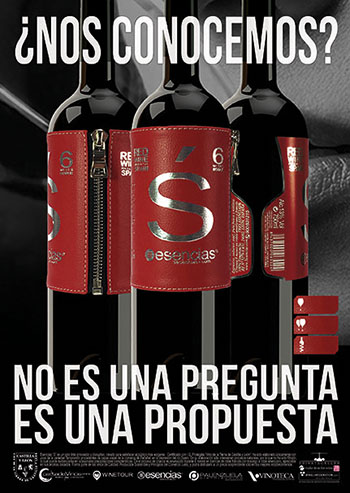
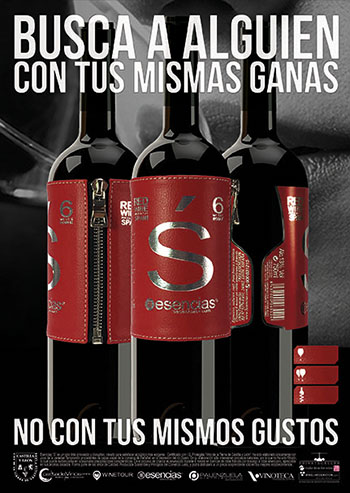
Data sheet.
Tobias Krämer Red Stuff Cuvée Rotwein Dry 75 cl.
Red wine. Tobias Krämer. Red Stuff Cuvée Rotwein. Dry. Q.b.A. Rheinhessen. Rheinhessen. Germany. Cabernet Sauvignon, Pinot Black, Regent. Bottle. 75 cl..
| Variety | |
| Country of origin |  Germany. Germany. |
| Region of origin |  Rheinhessen. Rheinhessen. |
| Appellation of origin |  Q.b.A. Rheinhessen. Q.b.A. Rheinhessen. |
| Format | Bottle. |
| Capacity | 75 cl. |
| Alcohol content | 13.5% Vol. |
| Sugar content | Because of its sugar content, it is classified as "Dry". It contains between 17 and 32 grams of sugar per liter. Brut Nature: < 3 gr/L Extra Brut: 3 - 6 gr/L Brut: 6 - 12 gr/L Extra Dry: 12 - 17 gr/L Dry: 17 - 32 gr/L Semi Dry: 32 - 50 gr/L (Semi Sweet) Sweet: > 50 gr/L |
| Visual tasting note | Violet, Dense, Blackberry red, Pillory. |
| Olfactory tasting note | Concentrated black fruit, Harmonic, Refreshing acidity. |
| Tasting note | Structured, Aromatic herbs, Good attack, Broad tannins. |
| Recommended pairing | Small game dishes, Bass, Game roasts. |
| Consumption temperature | 16ºC - 18ºC. |
| Typology | Red wine. Q.b.A. Rheinhessen. |
| Producer | Tobias Krämer. |
| Name | Red Stuff Cuvée Rotwein. |
| Weight | 1.500 gr. (1,5 Kg.). |
| EAN | 4260634660087 |
| Product reference | WAN4532838 |
| Actual price | 8,95 € . This product is currently not available. |
| Please keep in mind | The information provided and referred to the product features and details has been provided by the expert, manufacturer or producer or published on the official sites. In no case can it be considered as assessment made by our team, unless expressly stated otherwise. We suggest you to refer to the comments and reviews posted by our customers and users to expand and contrast this information. |
| Misreading | Our team provides this information and details in ESPAÑOL language. If you browse in another language note that the information contained may have been translated from the original language through an automated real-time process that has not been supervised by our human team. In case of doubt, misunderstanding or misreading about the content of this information you should refer to the original version of this page or contact our customer service team. |
| Product image | The product image or its label is only relevant for graphic purposes, so it may not match the identification of the vintage or other features and details of the product for sale. This product is provided in the conditions and format in which it is marketed at the current time. This product is not identified or supplied in a specific vintage. The product image and label may not match the vintage identification or other characteristics and details of the product for sale. |
| Country of origin | Spain. This product is shipped from Spain. |
| (UE)401/2010 Certification | Qualitätswein bestimmter Anbaugebiete (Q.b.A.) Q.b.A. Rheinhessen. |
| Production region | The production region of Q.b.A. Rheinhessen is located in La región de Palatinado-Renano, Alemania. En esta comarca se encuentran las poblaciones más renombradas dentro de la denominación de los vinos de Rheinhessen: Nierstein, Oppenheim y Worms-Pfeddersheim. |
| Storage position | Lateral position, horizontal bottle. |
| Storage temperature | Store at a constant temperature between 10-17ºC. Humidity should be constant around 60-80%. |
| Recommendations | Keep preferably away from light. |
| Accessories | This product is provided in the conditions and format in which it is marketed at the current time. In cases where the product includes an additional packaging, box and/or case, These accessories will be included in the shipment as long as they comply with the dimensions of the special packaging adapted and approved for the transport of beverages. In general, the images of the products that we publish on our website are only relevant for graphic purposes. The images do not show other accessories such as additional packaging (box, case, etc.) or promotional elements that may occasionally be included by the manufacturer along with the product. If you wish, we can inform you about the additional packaging, elements and accessories included with the product at the current time. |
| Legal Notice | It is against the law to sell or supply alcohol to, or to obtain alcohol on behalf of a person under the age of 18 years. If you are not more than 18 years old, you must leave this website. |
| Consumption | It is recommended to drink in moderation and demonstrate a responsible consumption of alcoholic beverages. |
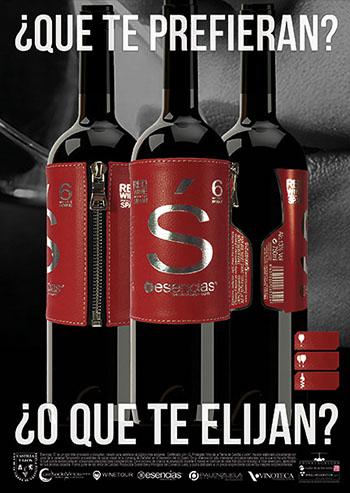
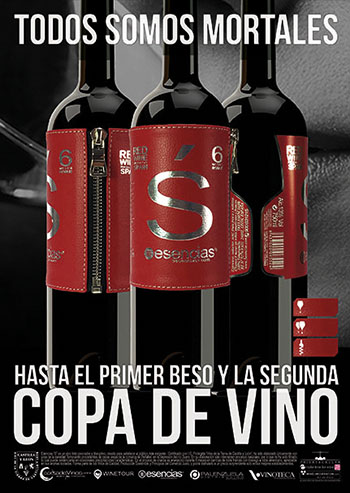
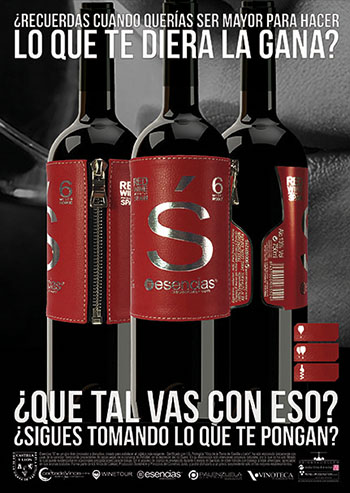
 Italy
Italy France
France Argentina
Argentina United States
United States Australia
Australia Portugal
Portugal Chile
Chile New Zealand
New Zealand South Africa
South Africa



 Austria
Austria



 Tokaj-Hegyalja
Tokaj-Hegyalja





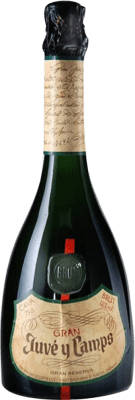
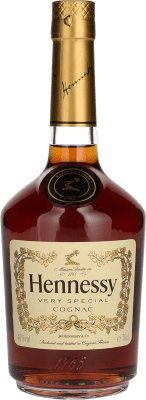


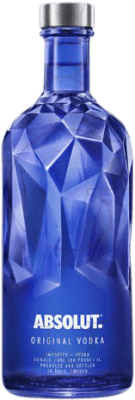






















 Language English
Language English





































